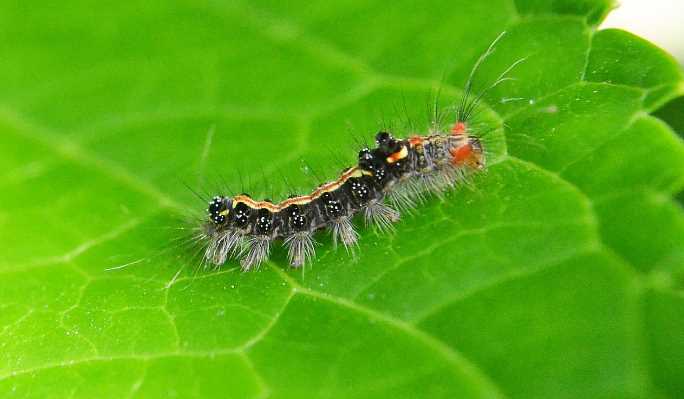In today’s world, pest control is a vital aspect of maintaining healthy homes, gardens, and agricultural landscapes. Traditional pest control methods often involve the use of harmful chemicals that can pose risks to human health and the environment. Integrated Pest Management (IPM) is a sustainable and holistic approach to managing pests that emphasizes prevention, monitoring, and control techniques that are safe, effective, and environmentally friendly.
The Basics of Integrated Pest Management
Integrated Pest Management is a comprehensive approach to pest control that focuses on long-term prevention and management of pests through a combination of techniques such as biological control, habitat manipulation, cultural practices, and the use of resistant varieties. The goal of IPM is to reduce the reliance on chemical pesticides and minimize the impact of pest control on human health and the environment.
Key Components of Integrated Pest Management
There are several key components of Integrated Pest Management that work together to effectively manage pests in a sustainable manner:
- Identification: Accurate identification of pests and understanding their life cycles and habits is essential for developing effective control strategies.
- Prevention: Implementing preventive measures such as proper sanitation, exclusion, and habitat modification to reduce the likelihood of pest infestations.
- Monitoring: Regular monitoring of pest populations to determine the extent of infestation and evaluate the effectiveness of control measures.
- Control: Using a combination of cultural, biological, mechanical, and chemical control methods to manage pests effectively while minimizing the use of pesticides.
The Benefits of Integrated Pest Management
Integrated Pest Management offers a range of benefits for both the environment and human health:
- Reduced pesticide use: By focusing on prevention and non-chemical control methods, IPM reduces the reliance on chemical pesticides.
- Minimal environmental impact: IPM practices are designed to minimize the impact of pest control on the environment, including beneficial insects and wildlife.
- Cost-effective: While IPM may require an initial investment in monitoring and preventive measures, it can lead to long-term cost savings by reducing the need for chemical treatments.
Case Study: Implementing IPM in Agriculture
One example of the successful implementation of Integrated Pest Management is in agricultural settings. By using a combination of cultural practices such as crop rotation, biological control agents like predators and parasites, and the judicious use of pesticides only when necessary, farmers can effectively manage pest populations while maintaining soil health and biodiversity.
Key Takeaways
Integrated Pest Management is a holistic approach to pest control that emphasizes prevention, monitoring, and control techniques that are safe, effective, and environmentally friendly. By implementing IPM practices, individuals can reduce the reliance on chemical pesticides, minimize the impact of pest control on the environment, and promote overall sustainability in pest management.
Frequently Asked Questions
1. What are the key components of Integrated Pest Management?
The key components of Integrated Pest Management include identification, prevention, monitoring, and control.
2. How does Integrated Pest Management differ from traditional pest control methods?
Integrated Pest Management focuses on long-term prevention and management of pests through a combination of techniques, while traditional pest control methods often rely heavily on chemical pesticides.
3. What are the benefits of implementing Integrated Pest Management?
Some benefits of implementing Integrated Pest Management include reduced pesticide use, minimal environmental impact, and cost-effectiveness.
4. How can Integrated Pest Management be applied in agricultural settings?
In agricultural settings, Integrated Pest Management can be implemented through a combination of cultural practices, biological control agents, and targeted pesticide applications.
5. What is the role of monitoring in Integrated Pest Management?
Regular monitoring of pest populations is essential for determining the extent of infestation and evaluating the effectiveness of control measures in Integrated Pest Management.
6. How can individuals implement Integrated Pest Management in their homes?
Individuals can implement Integrated Pest Management in their homes by practicing good sanitation, sealing entry points, and using non-chemical control methods such as traps and biological control agents.
7. Is Integrated Pest Management suitable for all types of pests?
Integrated Pest Management can be adapted to manage a wide range of pests, but some pests may require a combination of control methods to effectively manage their populations.
8. What is the role of cultural practices in Integrated Pest Management?
Cultural practices such as crop rotation, planting resistant varieties, and proper irrigation can help prevent pest infestations and reduce the need for chemical pesticides in Integrated Pest Management.
9. How can Integrated Pest Management promote biodiversity?
By minimizing the use of chemical pesticides and preserving natural habitats, Integrated Pest Management can help support biodiversity and beneficial insect populations in agricultural and urban settings.
10. Can Integrated Pest Management be applied on a large scale?
Integrated Pest Management can be successfully implemented on a large scale in agriculture, landscaping, and urban pest management programs by integrating multiple control methods and taking a holistic approach to pest control.
Conclusion
Integrated Pest Management is a sustainable and holistic approach to managing pests that emphasizes prevention, monitoring, and control techniques that are safe, effective, and environmentally friendly. By implementing IPM practices, individuals can reduce the reliance on chemical pesticides, minimize the impact of pest control on the environment, and promote overall sustainability in pest management. By understanding the key components of IPM and its benefits, individuals can make informed decisions about pest control that prioritize human health and environmental sustainability.
